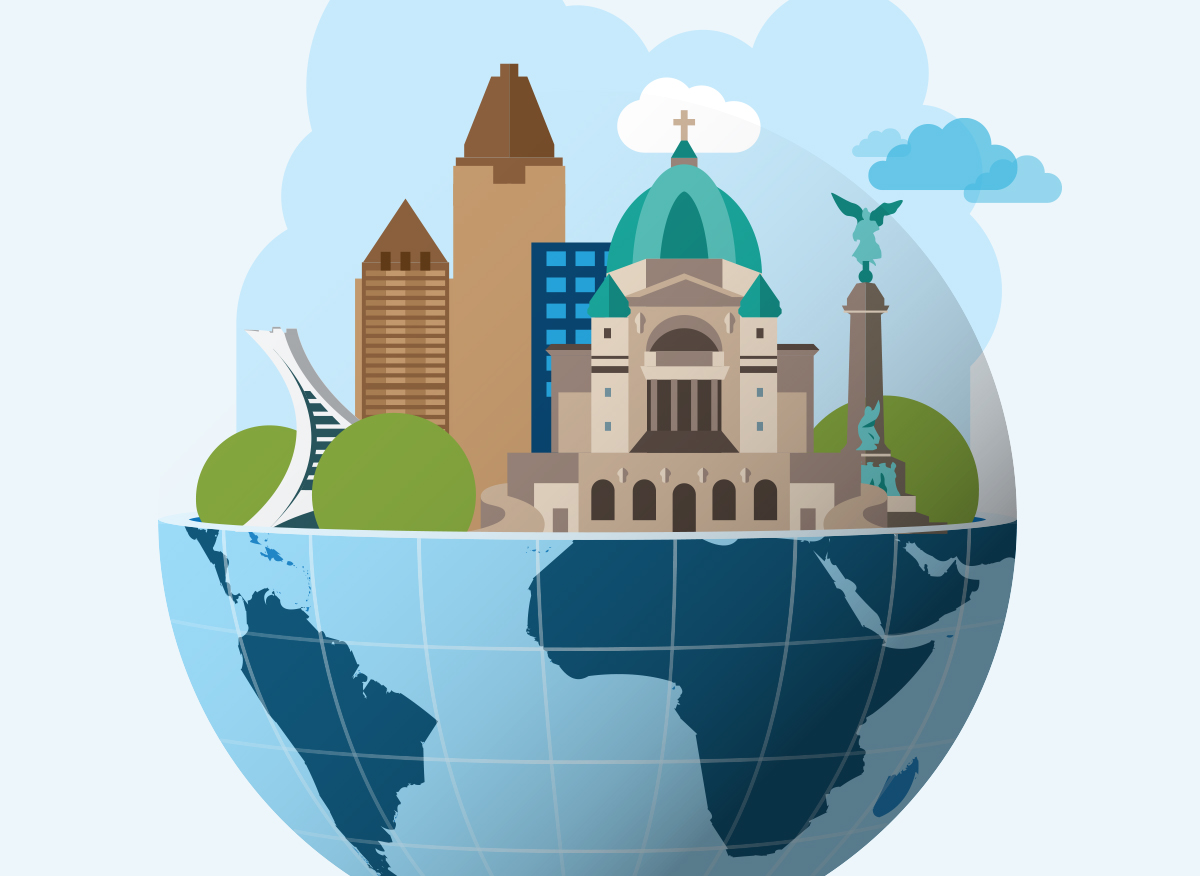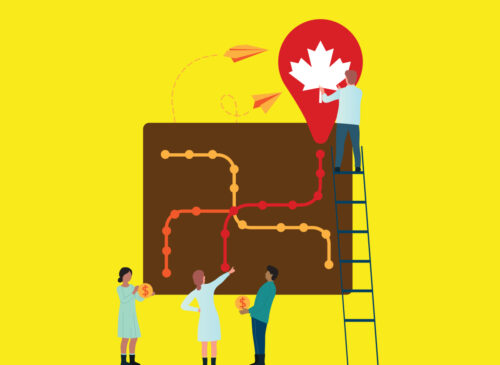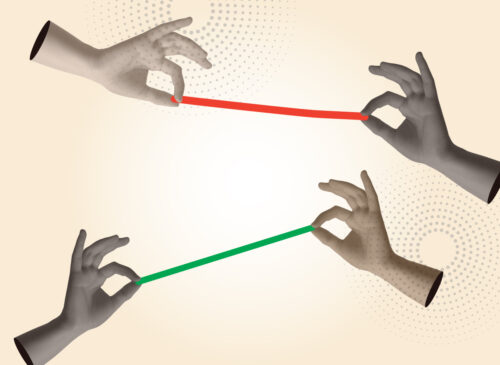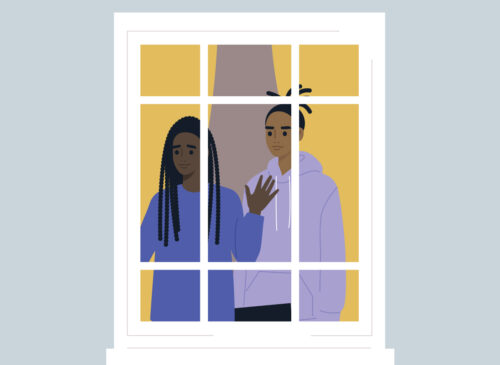Populist and anti-immigrant sentiment in the US and UK means that more international students are coming to study at postsecondary institutions in Canada. But, what Canada will they find when they get here?

The political events of the past year have been a recurring sitcom of oddities, leading many Canadians to bring out the popcorn and tissues. We watched with wry humour as the UK exited the European Union and we sat in stunned terror as the US elected Donald Trump. It has been more than a little unsettling. Our two closest allies—economically and culturally— have turned their back on the ideals of an open society and are instead pursuing narrow, protectionist policies.
The response in higher education has been ambivalent as institutions wonder what these political changes will mean for them. Most have held meetings and drafted statements to decry US policies while at the same time calculating the revenue they will gain if international students come to Canada instead of the UK or America.
Fortunately, several institutions have also seen the writing on the wall, foreshadowing our own potential to get swept away in the populist mania. Will this struggle become ours more directly? And what role is there for Canadian universities, many of whom are hoping these political events pay out in international students?
US chaos is Canada’s windfall
In the spring of 2016, as the UK made history by exiting the EU and Trump became a legitimate contender in the US, Canadians began to wonder what all of this meant for them. Trump’s protectionist policies were the most immediate concern. Without smooth trade with the US, a Canadian recession is almost guaranteed. Yet, when Trump was officially elected, the higher education response was one of eager anticipation. Would Canada benefit from the hostile environment in the US? Would we see an increase in foreign students and the money they bring in? The evidence suggests the answer is “yes”.
In the wake of Brexit, the EU ranked Canada as the most desirable English-speaking country for study abroad. This is a huge publicity bump for Canada. Shortly after this pleasant promotion, QS World University Ranking listed Montreal as the number one student city in the world, removing the romantic icon of Paris from first place. The world is watching Canadian universities.
In terms of actual numbers, Canada has never been the number-one destination for foreign students. According to the World Economic Forum, we are currently the eighth highest recipient of international students following the US, UK, France, Australia, Germany, Russia, and Japan. The reality is that we receive only 3 per cent of the world’s mobile students compared to the US (18 per cent) and the UK (11 per cent).
So topping the US and UK is a big deal. Students who cannot or will not go to the US and UK, have to go somewhere else, and we hope it is here. The future looks even brighter when you consider that Canadian institutions have already had a 20 per cent rise in applications from American students. Canada is quickly becoming the ideal place to get a degree.
Students who cannot or will not go to the US and UK, have to go somewhere else, and we hope it is here
What Canada are international students entering?
What is this idyllic Canada that international students are entering?
Well, Canada turns 150 this year. If this were not a strong enough reason to revisit our national identity, US xenophobia certainly is. Social media is abuzz with messages that Canada is welcoming, from the Ontario-150 campaign video with its flagship Muslim teen, to reporters finding refugees who have walked for hours just to get to Canada. We are looking for proof that we are made of superior moral fabric, that the hatred could not happen here, that we are not like them.
However, history is not our friend. In fact, Canadian politics has a concerning tendency to follow closely behind our US counterpart. Remember the 1980s, when the US elected conservative Ronald Reagan in 1981 and then Canada elected conservative Brian Mulroney in 1984? Ten years later the more liberal governments of Bill Clinton and Jean Chrétien both took power in 1993; Stephen Harper’s conservatives followed George W. Bush by only five years. And now we have our own charming, young Prime Minister in the wake of Barack Obama.
So before we feel superior, let’s stop to consider what will happen when Canadians begin to get disillusioned with our energetic Prime Minister and his diverse cabinet. An international student who eagerly applies for a Canadian degree in 2017 will only be starting their third year of study when Canadians have the chance to oust Trudeau and elect a right-wing leader. We even had our own celebrity-cum-politician vying for the job.
This scenario becomes even more hopeless if we add a recession fueled by US trade restrictions. Loss of employment, government deficits, and a rising cost of living could become a recipe for populist campaigning and protectionism. Even if we successfully construct an image that we are different from the US, that we make our own political choices and are open to the world, a recession would shatter this image fairly quickly. When unemployment hits, “me-first” politics becomes much more appealing.
The picture does not get brighter when you consider the findings of the international student survey by the Canadian Bureau for International Education. Only 13 per cent of international students reported that they faced cultural or religious discrimination from their peers inside the university campus, but 21 per cent said they experienced discrimination from the broader community.
When unemployment hits, “me-first” politics becomes much more appealing
This supports the idea that universities are bastions of liberal thought, and many are working hard to create inclusive communities. But eventually international students have to go out into the world and there is no guarantee that the Canada they find will be friendly. Indeed, there are new barriers on the learning-to-earning pathways for international students in Canada as they are no longer able to count their retail or food service jobs toward their permanent residency status. We want them to come, we need their money and cultural cache on campus, but not all of us want them to stay. And, if we do follow our neighbours to the south down the path of populism, it is unlikely that we will hold our top position for very long.
What is the plan?
So how can we avoid this future? How can Canadian universities take action and ensure that Canada is, as Canadian Federation of Students Chairperson Bilan Arte recently wrote, the “antithesis to Trump’s America?”
Well, the first thing is to leverage all that “stuff” that universities do. The brick and mortar multiversity, which is still the mainstay across Canada, has its fingers in everything from policy advising and medical research to educating young minds. Universities do everything, but can they do it all with the aim of countering discrimination?
The day-to-day grind of competing for funding and marking exams leaves little time for esoteric reflections. Some of us are left looking enviously at our social science colleagues who always seem at the centre of action research and social change.
So, let’s take a step back from the heroic examples of faculty activism and consider three tangible ways all of us in higher education can bring equity and openness into our daily activities. Think postscripts, interventions, and open ears.
First, for faculty and staff—hone your postscript. Find that one message from your work or research that broadens the conversation, that brings it back to equity and caring for the underrepresented. “Well Jim, those are the main findings from our genome project, POSTSCRIPT: I hope we keep in mind how this effects those in marginalized communities…”
Second, a lesson from the safe-campus folk: be conscientious interveners. Choose a phrase that reflects you—be it gentle strength or pithy sarcasm. Speak up when things get uncomfortable. “You know Ann, I felt uncomfortable with the way we treated that student…”
And finally, just listen. Some people take this further, adding an extra 30 minutes of office hours for equity issues. The aim is not to solve all problems on your campus, but it will signal that you are willing to have these conversations. It shows respect for diverse students as valuable, not just lucrative.
Influencing the vote
In terms of actually influencing an election, can universities help prevent far-right victories?
Universities and colleges are uniquely positioned. They educate more than 60 per cent of Canadians between the ages of 18 to 24. That is huge. And, when it comes to voting, this group is inconsistent. In the 2011 Canadian federal election only 38.8 per cent of this group voted. But, in 2015, when the stakes were higher, 57.1 per cent showed up to vote.
One reason for the increase was that, in 2015, universities worked directly with Elections Canada to make it easier for students to vote. New elections offices were established on university campuses—sometimes more than one—to get students registered to vote. This is a move in the right direction.
If the research tells us that those with a degree are less likely to vote for a populist leader, then let’s make sure our students are voting. Let’s increase funding for “get out the vote” campaigns, provide incentives for students who register, and make it easy and imperative that students cast their ballot.
We also need to remember that our students are not just isolated voters. They may also be an important means of bridging the “education gap.” Research suggests that those who hold degrees were less likely to have voted for Brexit and Trump. In Canada, more than 30 per cent of university students and about 42 per cent of college students are the first generation in their family to attend postsecondary education. This means that the university’s connection to people without postsecondary education—like those unfairly shamed because they voted for Trump—is much closer than we have been led to believe.
Let us assume for a moment that these efforts pay off and Canada manages to ward off the populist surge taking place south of the border and narrow protectionist politics at home. We will, most likely, continue to receive international students and their high tuition fees. But, what will they find when they arrive? We hope it is a Canada that is welcoming and diverse. Whether this is the case is a daily choice for all of us.










